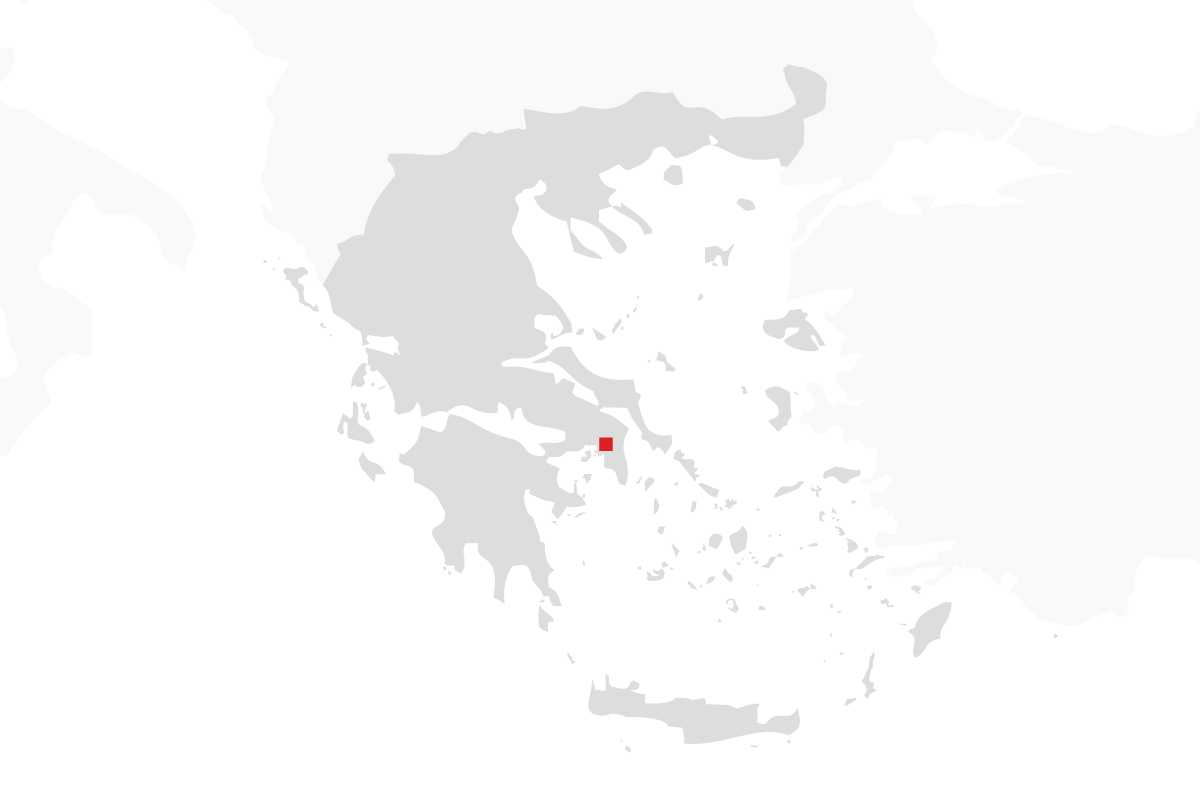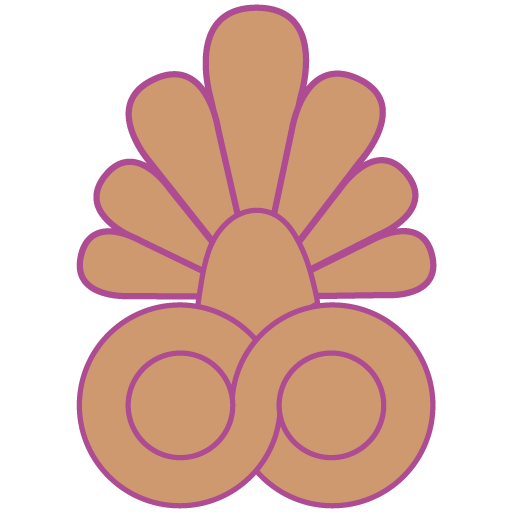
On this page:
Some of the best examples of classical Greek art from excavations across the country and beyond are on exhibit at the National Archaeological Museum in Athens.
The classical era is associated with the most important characteristics of what came to known as Greek civilization, and for creating some of the most influential Greek art.
Bronze Statues
Top row, left to right:
- Zeus of Artemision bronze statue. c. 450 BCE. Zeus (or Poseidon) with arms extended as if in the process of throwing a thunderbolt (or trident) found at Cape Artemision. 2.09 heigh.
- Bronze statue of a youth. Imitation or works of the second half of the 5th c. BC and the early 4th c. BC. Early Roman period. Unknown provenance (retrieved from the sea). Confiscated in Germany in 1998 and returned to Greece in 2002. Imitation or works of the second half of the 5th c. BC and the early 4th c. BC. Early Roman period.
Second row:
- Marathon Youth. Bronze statue of a youth studying an object. Circa 340 - 330 BCE.
Bronze statue of a youth studying an object. According to Kaltsas (242), the left hand was replaced at a later date with one in the shape of a lamp. - Bronze head of a boxer. About 330-320 BC.
Found at Olympia. The man is crowned with kotinos, the olive-wreath awarded to victors in the Olympic Games, of which only the stem is preserved. It is believed to be a statue of the famous boxer Satyros of Elis, who repeatedly won the boxing event at Nemea, Pythia and Olympia. The statue of Satyros at Olympia was the work of the Athenian bronze-sculptor Silanion. - Youth of Antikythera. Bronze statue found underwater at Antikythera. Circa 340 - 330 BCE.
It is know as “Youth of Antikythera” because it was found in the Antikythera shipwreck. The figure has been identified as either Perseus holding the head of Medusa, or Paris awarding the “apple of Strife”, to the most beautiful goddess, Aphrodite. Attributed to the Sikyonian sculptor Euphranor.
Marble Statues
Top row, left to right:
- Statue of Aphrodite of the “Syracuse Aphrodite” type. Made in the 2nd c. AD of the type of the Syracuse Aphrodite, the original of which goes back to the 4th c. BCE. The neck, head and right arm were restored by the famous Italian sculptor A. Canova.
- Statue of a man binding his hair (Diadoumenos). Original made by Polykleitos in the third quarter of the 5th c. BCE.
Found in the house of the House of the Didadoumenos in Delos island in 1894. There are many ancient copies of “diadoumenos”. This copy was made about 100 BCE of a famous original made by Polykleitos in the third quarter of the 5th c. BCE. It is 1.95m tall.
This statue is a good example of the classical Greek pose of contrapposto where one leg bears the weight of the body while the other leg is in a resting position. This weight distribution forces one part of the pelvis to be more elevated, shaping the spine into an “S” curve shape in order to make the body balanced. - Statue of Apollo in the Omphalos type. Pendelic marble. Copy made in Roman era of a bronze original from about 460 – 450 BCE.
- Statuettes of Nike from Epidaurus. Late 4th c. BCE.
Second row:
- Statue of a Nereid or Aura on horseback from the right corner akroterion on the west pediment of the temple of Asklepios at Epidaurus. About 380 BCE.
Pentelic marble. The goddess is depicted seated on a horse, rising from the Ocean. By the sculptor Timotheos. - Statue of Nike from Epidauros. About 380 BCE. From the central akroterion on the west pediment of the temple of Asklepios. Nike is depicted flying, with her dress billowing in the wind behind her. In her right hand she holds a partridge, a symbol of the healing power of Asklepios. By the sculptor Timotheos. Made of Pentelic marble.
- Statuette of Athena known as the “Lenormant Athena”. Pentelic marble. Found in Athens, near the Pnyx. It resembles the Athena Parthenos by Pheidias, the giant gold/ivory statue inside the Parthenon. This statuette has an Amazonomachy on the exterior of the shield and the relief image of the Birth of Pandors on the base -themes that adorned the original statue of Athens. The copy probably dates to the late century CE.
Bronze Statuettes and Objects
Top row, left to right:
- Bronze statuette of Poseidon. About 480 BCE. Found in the sea, in the Gulf of Livadostra in Boeotia, at the site of ancient Kreusis, the port of Plataiai. The god held with his right hand the trident, with his left probably a dolphin. His eyes were inlaid, made in a different material. A dedicatory inscription is carved on the low rectangular plinth.
- Statuette of a female figure (peplophoros), probably of the goddess Aphrodite. Bronze. 460-450 BCE. According to the museum information: “In the left hand she holds a dove, the goddess’s symbol, and in the right she would have a flower. She wears a Doric heavy tunic (peplos) and a short-sleeved light one (chiton). The hair is held in place above the forehead by a ribbon and drawn back into a chignon. The figure stands on a round sheet of metal that was nailed down to some other object. The upper and lower body were made separately and joined by four nails. Workshop of the north-east Peloponnese. Probably from the region of the Pindos mountains in Epirus.”
Second row:
- Bronze helmet of Pilos type from Dodona.
- Cheek-Piece of bronze helmet from Dodona. Late 5th or early 4th c. BCE.
- Votive plaque of the Zakynthian Agathon and his family, who were public guests or friends of the Molossians. The inclusion of male genitals represents the continuity of Agathon’s family line. The plaque reads: Ἀγάθων Ἐχεφύλλου καὶ γενεά, πρόξενοι Μολοσσῶν καὶ συμμάχων ἐν τριάκοντα γενεαῖς ἐκ Τρωΐας, Κασσάνδρας γενεά, Ζακύνθιοι. (Agathon, the son of Echephylos, and his offspring, proxenoi of the Molossians and their allies throughout thirty generations from Troy, the race of Kassandra, Zakynthians.- Chaniontis). Late 4th or early 3d c. BCE.
Relief Sculpture
Left column, top to bottom:
- Part of a disc with relief of a goddess’ head (possibly Aphrodite, to whom the disc was dedicated). Circa. 460 BCE.
- Votive relief. Pentelic marble. Found in Sounion, near the Temple of Athena. It depicts an athlete placing a crown on his head, and was probably dedicated by a victor in local games. His wreath was made of metal and fitted to the drilled holes that are visible around the head. Circa 460 BCE.
- Relief slab from a frieze depicting an Amazonomachy. Circa mid-4th c. BCE. Made of Pentelic marble. Found in Athens. Probably part of the frieze of a funerary monument in the form of a naiskos.It depicts two Amazons fighting a nude Greek warrior. Attributed to the school of Bryaxis or Timotheos.
Right:
- Funerary lekythos. Marble. 420 – 410 BC. Found in Athens, at Syntagma Square, the site of an important ancient cemetery. It depicts Hermes Psychopompos (leader of souls) escorting the young Myrrhine to Hades.
Highlights by Era
- National Archaeological Museum in Athens: Overview
- Stone and Bronze Ages 4000 – 1100 BCE
- Iron Age 1100 – 480 BCE
- Classical 480 – 323 BCE
- Hellenistic 323 BCE – 200 CE
The classical era (480 – 323 BCE) is associated with the most important characteristics of what came to known as Greek civilization.
The first century of this era is known as the “Golden Age” and the change is reflected in the wealth of art and artifacts it left behind.
The beginning of the Classical era coincides with the major external threat of a Persian invasion and an almost-certain annihilation.
The early period is considered the “Severe” period of Classical art where the facial expression reXect a more introverted and pensive disposition, often interpreted as the result of the Persian Wars. But the somber expression of all Classical art is also the result of a deeply felt idea Greeks developed where well-behaved humans exhibit control over their emotions.
Extreme facial expressions in sculpture were reserved for depictions of adversaries and beasts, making it easier to know who is who. In the Classical era moderation, logic, and rationality were all the rage.
In classical art accurate representation was pursued with vigor, as was the Ideal. The statues of this era describe ideal bodies, in perfect physical condition, and in the prime of their lives.
Within a couple hundred years of the Classical era’s rise, the needle was moved to the other end of the idealism spectrum.
During the following Hellenistic era Greeks and their art became expressive, exuberant, and cosmopolitan.
Related Pages























